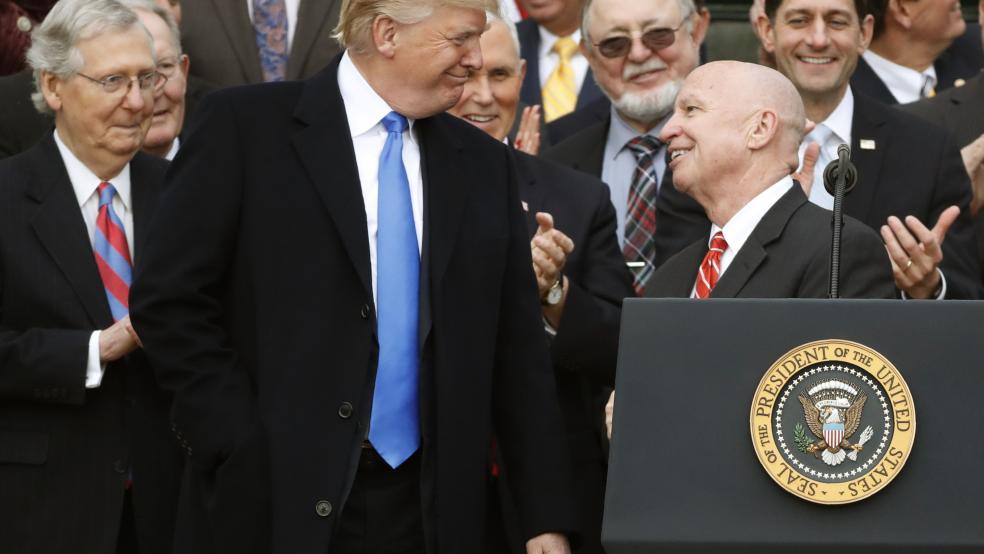The corporate tax cuts included in the 2017 Tax Cuts and Jobs Act helped boost business investment while delivering a small increase in worker pay, according to a new analysis published by the Bureau of Economic Research. The tax cuts did not, however, come anywhere close to paying for themselves, as their Republican proponents in Congress and the Trump administration insisted they would, and instead are costing the federal government more than $100 billion per year in lost revenues.
The team of four researchers affiliated with Princeton University, the University of Chicago, Harvard University and the Treasury Department concluded that provisions providing enhanced tax breaks for corporate investment were the most effective part of the legislation, providing clear positive effects, though not without significant costs.
“The evidence that taxes matter for investment really is there,” author Gabriel Chodorow-Reich of Harvard told The New York Times’s Jim Tankersley. “And the evidence that corporate tax cuts are expensive also is there. They’re both just features of the data.”
Additional business investment spurred by the tax legislation, which also slashed the top corporate tax rate from 35% to 21%, made the U.S. economy about 0.1% larger each year, according to the analysis. That increase translates to a pay bump of about $750 per year for the average worker — far short of the $4,000 to $9,000 increase cited by Republican lawmakers and conservative policy experts who lobbied for the package of tax cuts.
Low, low tax rates: A separate analysis by the liberal-leaning Institute on Taxation and Economic Policy found that tax rates for some of the nation’s largest corporations have fallen well below the 21% top rate put in place by the 2017 tax law. Looking at the 342 companies in the Fortune 500 that have reported profits every year between 2018 and 2022, ITEP calculated that their average income tax rate was just 14.1%.
“This is mainly due to loopholes and special breaks that the 2017 tax law left in place and, in some cases, introduced,” a team of ITEP analysts wrote. “Tax avoidance occurs because Congress chooses to allow it, either by enacting special exceptions and breaks from the regular tax rules, or by leaving in place loopholes that are clearly being exploited.”
The bottom line: The latest analysis of the 2017 Trump tax cuts provides further evidence that changes in tax laws can help shape corporate investment decisions — and that tax cuts do not pay for themselves.
Taxes
Trump-Era Corporate Tax Cuts Boosted Investment, but Did Not Pay for Themselves: Analysis

JONATHAN ERNST



